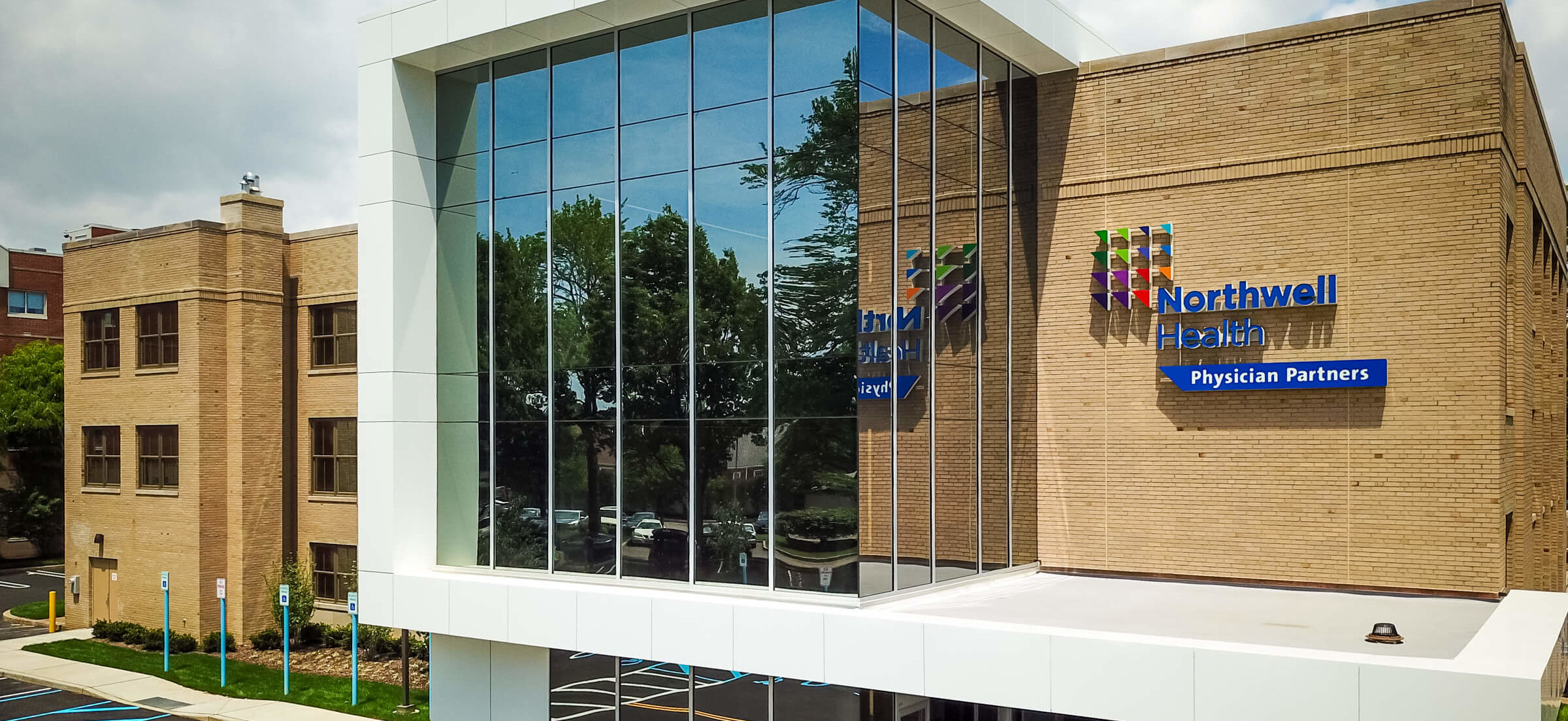One of Talisen’s core values is the pursuit of perfection. And as we all know, perfection can take time, which is the one thing that’s in short supply in a speed-to-market-driven situation. The Lynbrook Medical Office complex for Northwell Health is a prime example, with operational and branding concerns putting significant pressure on the timeline for this massive renovation project.
Our route forward was rooted in the understanding that nothing is perfect. You have to account for the unaccountable. There are always obstacles, challenges, and found conditions. The Lynbrook building has a gorgeous, iconic brick façade, which was thought to be in decent condition.
As we all know, things are seldom as they seem. The brick façade was structurally unsound, and would need to be repaired. This work would add millions of dollars to the budget and could potentially put the project weeks – even months – behind schedule.
It was at this point that the value of strong stakeholder relationships proved itself.
Client Advocacy & Stakeholder Teamwork in Healthcare Construction
The health care industry famously operates on a 1% margin. That, in addition to the established professional relationship we already had with Northwell, is why we were happy to be involved with the entire team from the project’s earliest days. Being at the table early allowed us to help the design team with constructability and budgeting concerns while addressing found issues.
Our Bid-Buy-Build model includes the fact that our PMs are also our estimators. This degree of involvement allows us to inform all stakeholders quickly of the impact of found conditions. In this instance, the overruns associated with the façade approached 30% of the contract.
By identifying the critical path trades needed to address the façade issue, it was made possible for stakeholders to decide next steps quickly and efficiently. Because all parties were highly motivated to see the facility open quickly, there was a high degree of openness to mitigate the impact of this found condition on the timeline.
Additionally, we were able to identify and capitalize on other time-saving opportunities, such as starting preliminary work before all project plans were finalized. In practical terms, this makes a lot of sense: you don’t need to know what color the paint on the second floor is going to be in order to have crews on scene digging the necessary foundation holes.
That said, allowing early work packages to go forward is only possible when there’s a strong working relationship between the builder, A&E team, and the stakeholders. Eliminating the distressingly traditional adversarial relationship that is sometimes present between A&E and construction in favor of a more integrated approach saves a tremendous amount of time. In this instance, we were able to cut the timeline by a third, shaving four months off the year-long schedule.
Every decision on a construction project has timeline and budget implications. Because our team understands the chronology of work, they can adeptly identify the downstream impact of any changes. For example, the additional work needed to address the façade issues could have easily caused the HVAC installations to be delayed. However, we strategically expedited the HVAC sketches, so all necessary permissions and approvals were obtained early, and tin fabrication could start. This allowed for installation to happen as soon as it was physically feasible, without negatively impacting the timeline.
Implementing These Principles on Your Next Project
No two commercial construction projects are ever alike, even in the health care industry. That being said, most organizations can appreciate the diminishment of schedule and increased budgetary controls that are associated with early integration of the constructor and A&E team. Being able to see the financial impact of speed to market is often the most convincing argument, as most businesses prefer making money to spending it.
